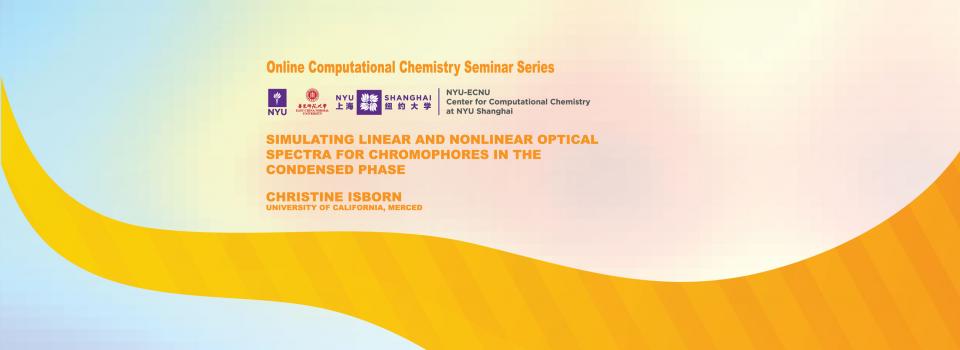
Abstract
Many methods for simulating optical spectra either account for the condensed phase environment or include vibronic transitions, but it is computationally challenging to include both of these important effects. Over the past few years we have developed multiple methods that combine these effects, with different approximations inherent in each method. I will present these new methods that combine ensemble sampling with vibronic effects, as well as how we are using energy gap correlation functions from molecular dynamics trajectories for simulating both linear and nonlinear spectroscopy. The talk will also explore how a quantum mechanical treatment of the condensed phase environment leads to changes in the coupling of vibrational modes to an optical excitation as manifested in the spectral density and in the nonlinear optical spectroscopy. In this talk I will systematically compare the spectral densities and corresponding two-dimensional electronic spectroscopy (2DES) and transient absorption (TA) signals, with the analysis of the reorganization energy, dynamic Stokes shift, and static Stokes shift, computed with a standard fixed-point charge environment to those using a fully polarizable large-scale quantum mechanical environment in the excited state calculations. We find that the additional polarization provided by the QM solvent and a stronger chromophore-solvent interaction leads to a systematic intensity increase in the low-frequency region of the spectral density, which then broadens the 2DES signal and leads to a larger Stokes shift. If time allows, I will discuss our recent efforts to incorporate the effects of a QM environment with machine learning methods.
Biography
Professor Christine Isborn is originally from California, earning her BS in Chemistry and Physics from the University of San Francisco. After spending some time working in a music store in the Haight-Ashbury and exploring Scotland, she got serious about spending time thinking about electrons and started her Ph.D. at the University of Washington in Seattle. She finished her Ph.D. in 2009 working with Xiaosong Li and was an NIH Ruth Kirstein post-doc in the Martínez group at Stanford before starting her faculty position at the University of California Merced in 2012. She is now an Associate Professor and Chair of the Chemistry Graduate Program. When not thinking about science or how to help grad students, she keeps busy running after her two high-energy sons.
Seminar Series by the NYU-ECNU Center for Computational Chemistry at NYU Shanghai


